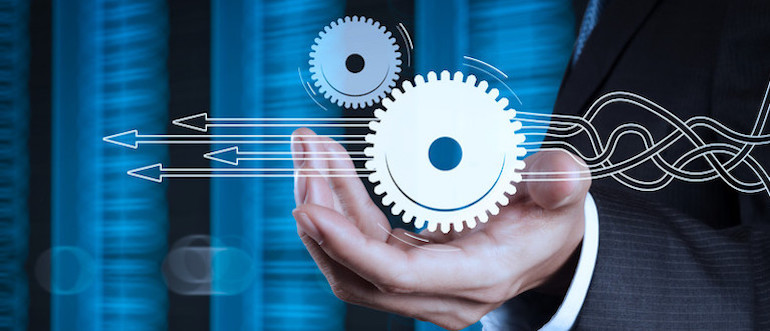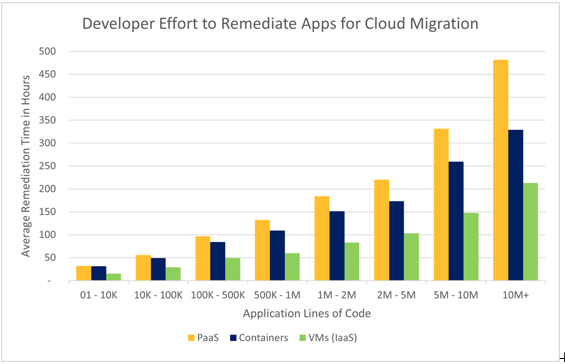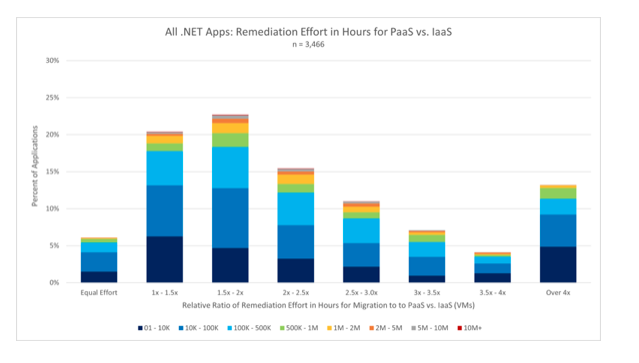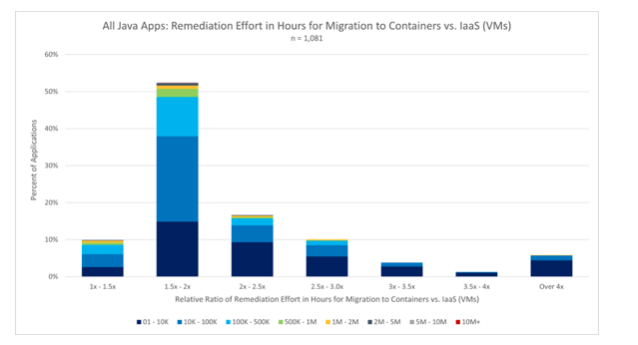Everything the industry is saying about cloud migration is wrong! It is not, in fact, better to remediate applications to infrastructure-as-a-service (IaaS), also known as a lift and shift, and then modernize in a later phase of migration. This is an expensive, time-consuming and disruptive ‘two-step’ process for partners and customers. For most applications, the data is very clear – it is far more efficient and cost-effective to modernize and migrate to platform-as-a-service (PaaS) or containers in one migration phase.
To showcase this, I can share data collected from UnifyCloud’s analysis and assessment of more than four thousand applications, sixteen thousand SQL databases, and five thousand Oracle databases from the CloudAtlas platform. The analysis highlights the benefits of remediating applications to a modernized PaaS or container architecture in a one-step migration versus the “lift and shift first and modernize later” approach the industry currently recommends. Our data proves the two-step approach is not optimal for at least 50% of applications.
The charts below show the volume of applications we assessed and the programming languages that are the basis of this analysis. The applications are segmented by lines of code, which shows that almost two-thirds of the apps analyzed contain less than 100,000 lines of code. The distribution of application development languages assessed unsurprisingly skews heavily to .NET and Java applications.
We analyzed this dataset to find the average amount of time required to remediate apps for PaaS, containers, or IaaS migration to virtual machines (VMs). The key finding is that while an IaaS approach, lifting and shifting to VMs, is the easiest, the effort to migrate to containers or PaaS is not inconsiderable given the myriad benefits. While it is approximately double the effort, on average, to modernize to PaaS and just 74% more effort to migrate to containers, the effort required for smaller apps (most apps being migrated) is not insurmountable. Compared to the current industry approach of ‘lift and shift’ first and then modernize later, which requires two separate, disruptive, and time-consuming migrations, we believe it makes sense to take the extra effort to modernize at least half of applications to containers or PaaS right away. This reduces the risk and complexities of two separate migration efforts and allows organizations to reap the benefits of true modernization sooner. This data is counter to the conventional wisdom that PaaS modernization is exponentially more difficult than IaaS modernization. While double the effort is not insignificant, it may make sense to tackle that in one step versus two, and, in many instances, the effort may be considerably less.
Another takeaway is that the level of effort to remediate is not linearly proportional to lines of code. If we compare the effort to remediate less than 100,000 lines of code versus the effort to remediate more than 10 million lines of code, it only requires approximately eight times more remediation effort but represents 100 times the lines of code. The time benefits increase as the size of the application or application portfolio increases, meaning users can have confidence in migrating and modernizing even their largest and most complex applications directly to PaaS versus the ‘two-step’ process to IaaS first.
Now let us take a closer look at the 3,466 .NET applications we analyzed. Data indicates that fifty percent of all .NET applications scanned can be modernized to PaaS or containers in less than double the hours it would take to migrate to IaaS. If it requires 10 hours of code remediation effort, on average, to migrate an app to IaaS, it is 20 hours or less of code remediation effort on average to modernize that same app to PaaS or containers. In fact, for one-quarter of applications, the effort is 50% more, strengthening the recommendation that the one-step process to PaaS or containers is more efficient than the two-step process to IaaS.
This leads to an important question – how do these insights affect migration decisions? Does it result in more applications being modernized to PaaS or containers in a one-step migration versus the current two-step industry standard? The answer is a resounding yes. Most of our users with some Azure experience prefer the ‘one-step’ remediation and migration to PaaS or containers versus the ‘two-step’ alternative of executing a lift and shift migration followed by a disruptive, expensive and complex second phase of remediation, modernization and migration. The two-step process is often seen as cost- and time-prohibitive after a thorough analysis of the data, and our users note that they appreciate the power of these data-driven insights and how they enable better-informed migration planning.
The analysis is similar for the 1,081 Java applications we assessed for migration to containers. The key difference is that even more Java applications fall within the 2:1 range of PaaS or container remediation effort – 62% can be modernized with double the effort or less.
The takeaway is that a one-step modernization to PaaS or containers, while a bit more effort, is often worth that extra effort for several reasons: It is more efficient and cost-effective in the long-term; it avoids the complexity and resource-intense requirements of a two-step migration and it helps businesses realize true cloud benefits faster. What is just as important is having the right tools to understand the situation, assess the opportunity and execute a plan.







